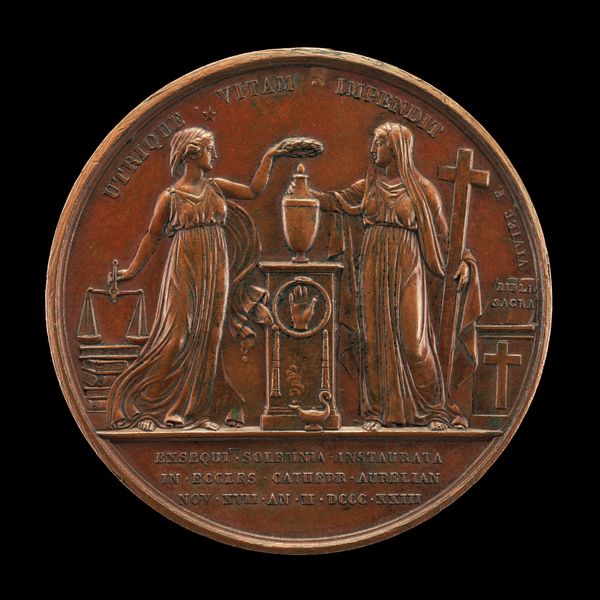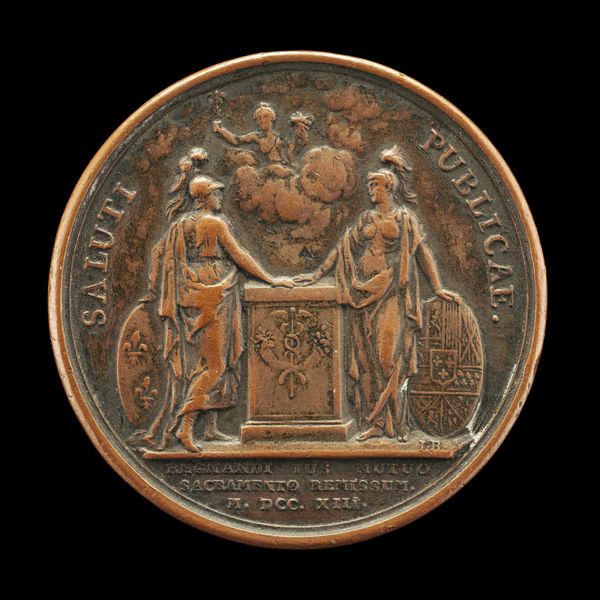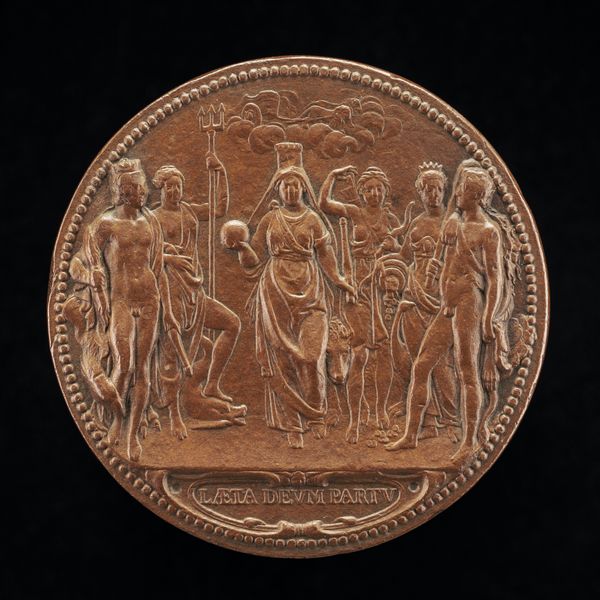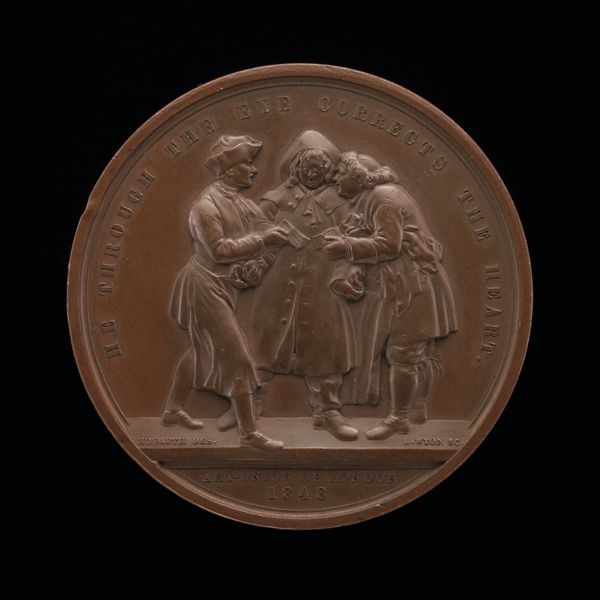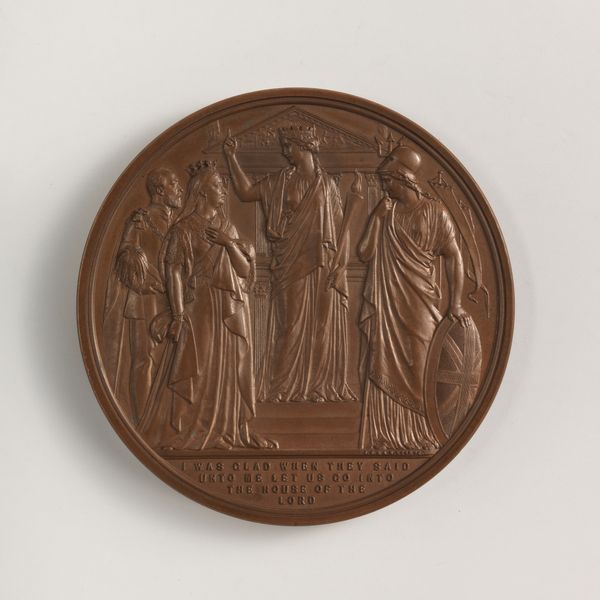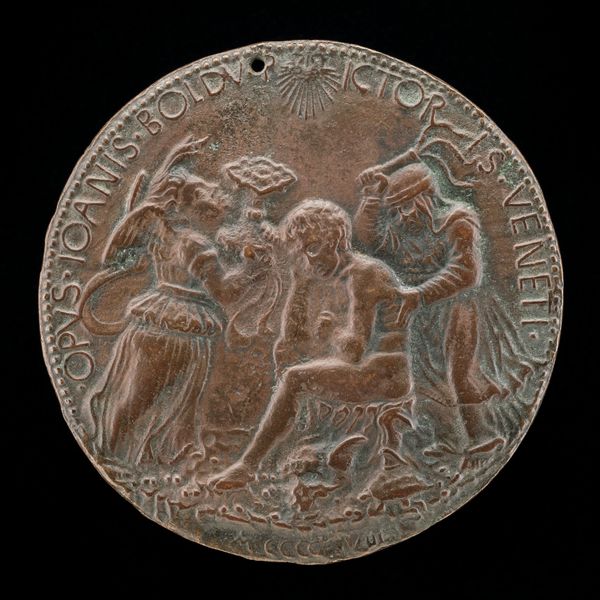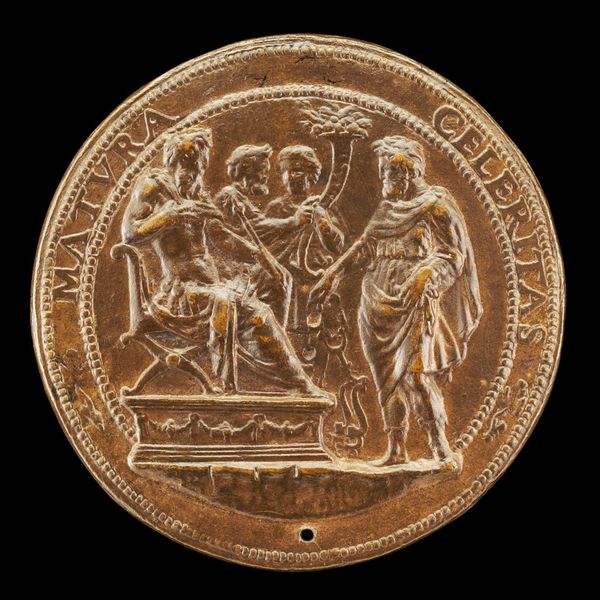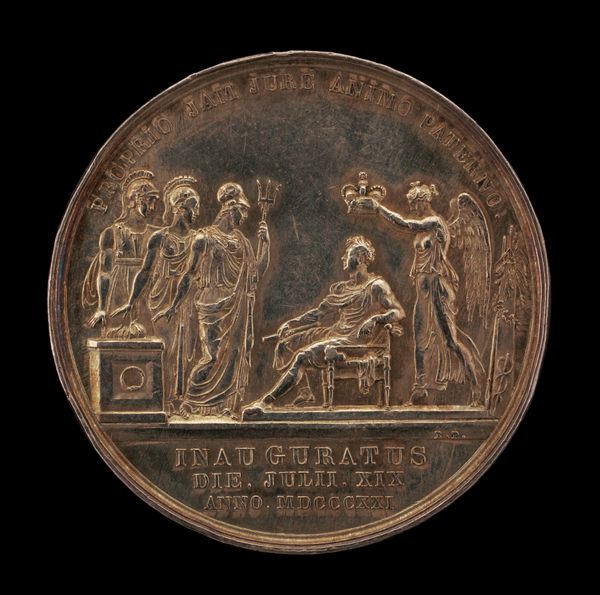![Rome and the Papal States Welcoming the Return of the Pope from Imprisonment [reverse] by Henri François Brandt](/_next/image?url=https%3A%2F%2Fd2w8kbdekdi1gv.cloudfront.net%2FeyJidWNrZXQiOiAiYXJ0ZXJhLWltYWdlcy1idWNrZXQiLCAia2V5IjogImFydHdvcmtzLzg1NDk1ZDNiLWIyNWQtNDRlOS04OTYzLTI3Yzc1Mjk2NTFjOS84NTQ5NWQzYi1iMjVkLTQ0ZTktODk2My0yN2M3NTI5NjUxYzlfZnVsbC5qcGciLCAiZWRpdHMiOiB7InJlc2l6ZSI6IHsid2lkdGgiOiAxOTIwLCAiaGVpZ2h0IjogMTkyMCwgImZpdCI6ICJpbnNpZGUifX19&w=3840&q=75)
Rome and the Papal States Welcoming the Return of the Pope from Imprisonment [reverse] 1816
0:00
0:00
silver, metal, relief, sculpture
#
portrait
#
neoclacissism
#
silver
#
allegory
#
metal
#
sculpture
#
relief
#
sculpture
#
history-painting
Dimensions: overall (diameter): 4.29 cm (1 11/16 in.) gross weight: 32.88 gr (0.072 lb.) axis: 12:00
Copyright: National Gallery of Art: CC0 1.0
Editor: This silver relief, "Rome and the Papal States Welcoming the Return of the Pope from Imprisonment" by Henri François Brandt, made in 1816, feels grand yet restrained. All these classical figures… I’m curious, what symbols jump out to you in this scene? Curator: The symbolism here truly speaks volumes. See how each female figure likely represents a different region or city within the Papal States, each offering tribute. It’s a visualized political statement, right? Note the papal tiara and keys at the top; symbols of papal authority, now restored. This iconography of return and reestablishment suggests more than just a welcome; it is broadcasting the resilience of the Church. How does that declaration sit with you? Editor: It feels… staged. All this neoclassical garb, these posed figures. I mean, the artist has used these recognizable, classical, figures to build some idea, a collective persona. I think I'm responding to how obviously power is being communicated. What do you think the average citizen thought of this piece? Curator: The visual vocabulary would have been immediately recognizable. Remember, Neoclassicism itself became linked to power. The average citizen was likely primed to see this as a narrative of restoration. However, the overt symbolism could also be interpreted as propaganda. Do you think the owl and shield offer additional meaning to the primary subjects? Editor: Oh, good point! They add another layer, perhaps wisdom or protection… so much is being communicated in very subtle ways, adding meaning to the overall goal. It's like these archetypes are a shared language of power, hope and a desire to be recognised as intelligent subjects. I suppose there's power in speaking that language. Curator: Exactly. The power to shape cultural memory, and to subtly guide interpretation. Consider the lasting implications of such deliberate messaging. Editor: This piece makes me wonder about the narratives we build around power today and how they’ll be viewed in centuries to come. Curator: A fitting consideration. Every era encodes its values, and decoding those is where art history gets really exciting.
Comments
No comments
Be the first to comment and join the conversation on the ultimate creative platform.
